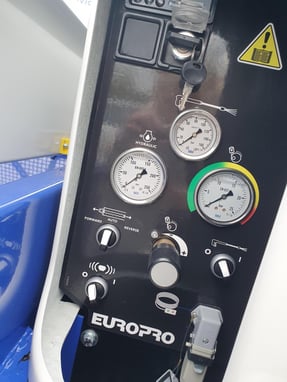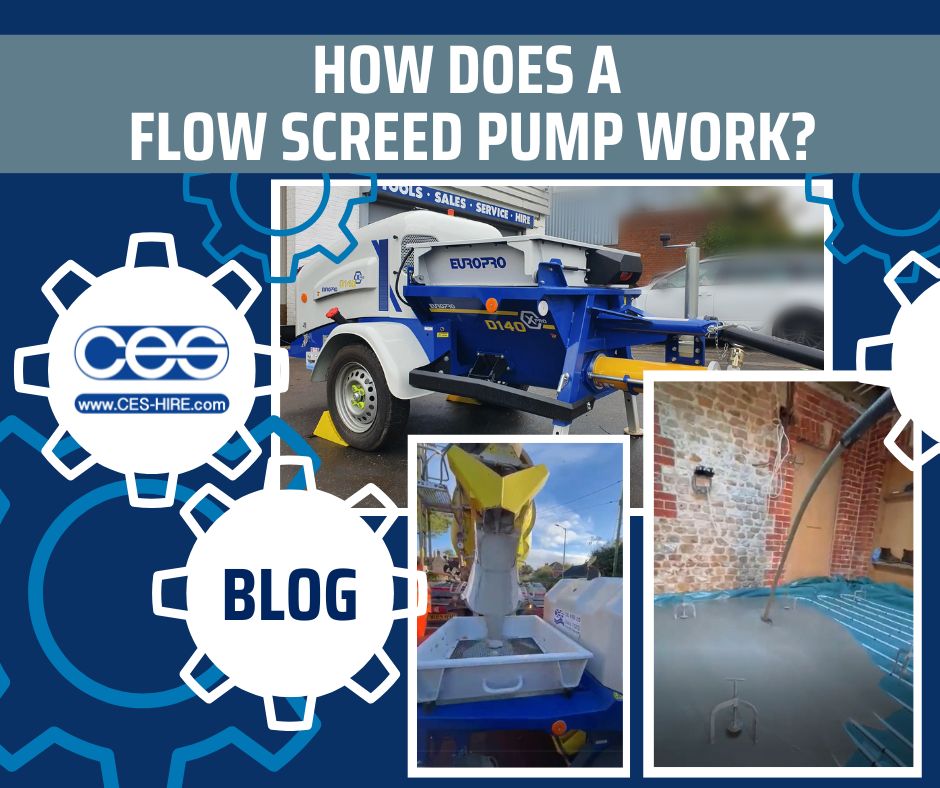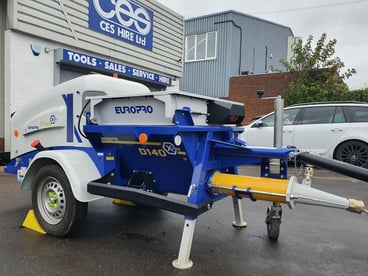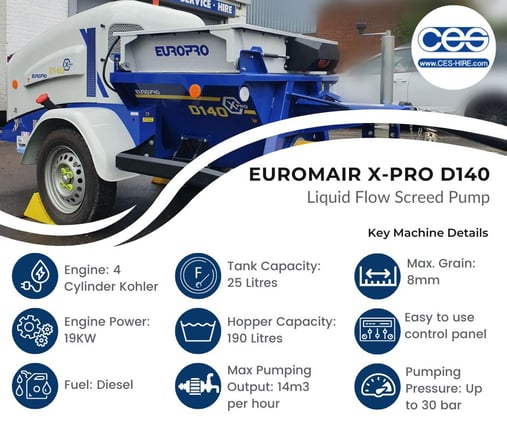Flow Screed pumps are a machine of the moment as contractors switch from back-breaking traditional screed to an easier method of working which achieves fantastic level, even and smooth flooring surfaces. Rapid pour Liquid Flow Screed has many benefits including it’s compatibility with a range of floor finishes, time-saving, labour-saving and increase in productivity. Find out more about the benefits of using liquid flow screed here >
Safety First
As with any machine, it is important to draw the users attention to the manual and pay close attention to the safety points. Accidents and injuries often happen due to ignoring safety standards so always invest the time reading and understanding the safety guidelines. A more detailed run through of safety protocol when operating a liquid flow screed pump can be found here >
Pre-use Checks
The actual operation of a flow screed pump is pretty simple and there are arguably more steps to remember in your preparation as opposed to the running of the machine. It’s well worth checking out this blog which gives you top tips for getting started with latex or flow screed > . Before you begin pumping follow these steps (all machines are different and these steps refer to our Euromair X-Pro D140):
-
Check the hydraulic and engine oil levels
-
Ensure there are no objects in the hopper (e.g. a rogue trowel or spanner)
-
Ensure machine stability by lowering/raising the jockey wheel or placing onto legs if they are fitted
-
Unlock the emergency stop button on the hood
Time to Pump
At CES, 20 metres of hose is supplied as standard which generally achieves the best results. However sometimes you may need more to suit your project. With more hose you might discover the flow rate reduces as the pressure in the hoses drops so appropriate adjustments should be made. Before firing up the machine, you should also be aware never to use incorrect fuel (in this case with a diesel machine, stay away from petrol) and also never to run the pump without water. Now it’s time to pump. With a machine like the D140, we would follow these steps:
-
Turn the ignition key to the on position and wait for it to light up
-
Once the preheating (glow plug) lights go off start up the the engine using the ignition key
-
Run the machine for 5-10 minutes on tick over (low revs) to allow it to warm up
-
Fill the hopper with approximately 30 litres of water and a dash of washing up liquid
-
Connect the product hose to the pump outlet
-
Turn the pump rotation control switch to forward position with the speed at ¼ speed
-
Prime the hose by running water through it. Be sure to empty the hoses of water prior to pumping. This will ensure the screed is not watered down. .
-
Empty the leftover water in the hopper by opening the wash out bung
-
Pour your ready-mix from the truck directly into the hopper and off you go.
-
Use the flow rate dial on the control panel to adjust accordingly.
Behind the Scenes Machine Mechanisms
Essentially when you use a liquid screed pump it is as simple as switching on the machine, pouring from the ready mix truck in the hopper, adjusting the flow rate and allowing the screed to pump through the hose to the desired level as set up on your levelling tripods. The machine really does the hard work for you, however there are some behind the scenes mechanics that enable your flow screed pump to work. The magic really lies in the rotor stator technology which is working away in the background. Rotors and stators are the mechanisms behind many of our machines. Product (mortar, plaster, grout, cement) is directed through the rotor and stator by a cardan shaft. The rotor (spiralled steel shaft) creates conveying chambers inside the rubber tubing that lines the inside of the stator (the stationery element of the device). The conveying chambers move in the direction of flow and create a continuous flow which pushes the material through the hose and out onto the surface. Different rotors and stators achieve varying speed and pressure results and should be selected depending on your material and aggregate size. CES General Manager Ben takes you through a selection of rotors and stators stocked at CES in this video >
The Euromair X-Pro D140
Having referred to the D140 throughout this blog, here are some key facts about this machine which is available to hire and purchase.





